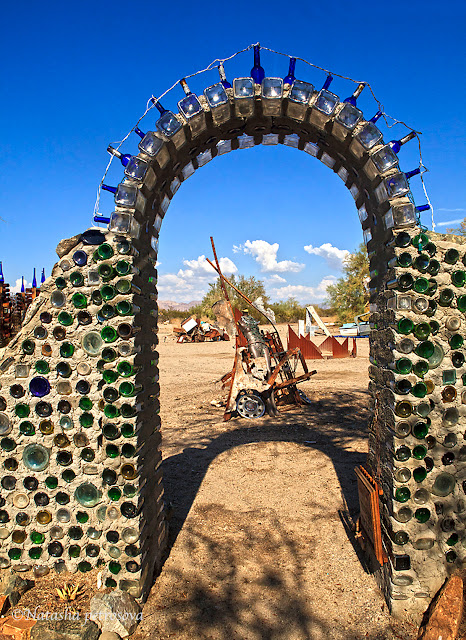As we left Salb city we were on our way back home travelling down 111 hwy. we spotted a few abandoned buildings and stopped to investigate them . There were few buildings still in Niland completely destroyed.
Those buildings we saw as soon as we left Slab city
There other building was father traveling hwy 111. It seems that is was a nice house. There was still a sign "private property" and I wonder who it belongs to.
Front Patio
Inside a house
Kitchen
bedroom with a vew
Bath tab

A desolate warehouse about four miles from Niland, California, along Highway
111, this creepy looking structure invites only the most adventurous travelers to
drive up and visit. I was one of them.
Side entrance of the huge, deserted warehouse building. One could get lost exploring all of its rooms.
Long ago forsaken, the structure still gets frequent visitors, as its graffiti-covered, cinder block walls confirm. The absence of trash, and other refuse, suggests that visitors don't stay here long; they just stop to investigate, leaving their personal marks and messages. Some of the highly decorated rooms give this forgotten warehouse new life and meaning. It now stands as a rest stop for Slab City-bound drifters, and a remote graffiti art gallery of sorts, its concrete walls a canvas for spray cans.
The building’s front entrance. Yes, it is near Niland.

An underlying theme of the many drifters passing through on their way to Slab City might be Finding myself / Losing myself. Slab City, the "trailer park utopia" that invites those who seek freedom from the American governmental/social structures, sits only eight miles away. Some migrate there to be lost, while others claim they have been found.
Abundant with graffiti, this wall demands special attention. It looks as if the graffiti artists are engaged in a new form of competition, by drawing on top of each other's work. A representative of the Cat Cult, a Los Angeles-based graffiti art collective, created the pink creature. Cat Cult was recently featured in Juxtapoz, a magazine that celebrates urban alternative and underground contemporary art forms. Black writing by the cutout in the wall (window?) memorializes D. Armstrong. This artistic environment brings California painter, Duane Armstrong to mind. Armstrong is famous for placing a ladybug in the corner of almost all of his landscape paintings. That D. Armstrong is still alive though. Robert Walker, the artist behind RW2 Gallery, seems to have found a new way to advertise, by way of this graffiti wall. Google him to see his intriguing oil paintings. He and his partner, Rowland "Eddie" Cook, travel the country in a Winnebago, selling at festivals and art shows, and painting along the way. In January 2012, Tobert and Eddie came to Slab City, and on their way either in or out, stopped here, to add this colorful moniker.The PBK graffiti crew may have created the blue and yellow PAIN graffiti below.
This is another piece I believe PBK created, accompanied by a paraphrased version
from Proverbs 12:15: The way of the fool is right in his own eyes.
The building stands in close proximity to Slab City, also known as The Last Free




















































